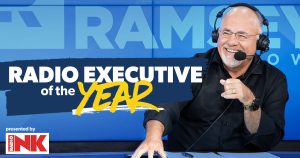Retiring as a millionaire is the dream of many Americans. And while a million dollars isn’t what it used to be, that level of wealth would make retired life comfortable for most. The good news for you, though, is that this goal is achievable, especially if you have a lot of time before retirement.
If you want to learn how to retire as a millionaire, the first thing to know is that it’s simple but not easy. In fact, you can break down the process into three key steps that answer these questions:
- What do you need to do? Invest in broadly diversified index funds.
- When do you need to do it? Invest now, until you’re rich.
- How do you need to do it? Stick to your plan, regardless of the economy.
This plan is simple, and it’s easy to explain what you need to do. The hard part — absolutely by far! — is sticking with the plan over time. But that’s where your real wealth comes from. Your behavior is the single most important part of this plan — surprisingly, not the fund you invest in — and it’s the one that’s going to make or break your ability to retire as a millionaire.
How to retire a millionaire
Let’s dig into each step and see how it works and what you need to do.
1. Invest in broadly diversified index funds
Broadly diversified index funds can be your investment vehicle for a ride to becoming a millionaire retiree, if the stock market performs as it has in the past.
If you know little about investing and have no desire to learn more, you still can be a successful investor. That’s because you have the power of index funds. Index funds are a collection of assets, often stocks or bonds, that are based on a pre-set grouping of investments.
Here’s what to look for in an index fund:
- Broadly diversified — This kind of fund owns stocks across a wide variety of industries.
- Invested in stocks — Stocks offer the highest potential for strong long-term gains, though they’re more volatile in the short term.
- Low cost — Index funds are among the cheapest funds in the market, so you should be able to find an attractive one with an expense ratio below 0.5 percent.
- Good long-term track record — Look for funds that have returns over the prior 10 years of better than 10 percent annually. Many funds have returns of more than 15 percent.
- Good long-term track record — Look for funds that have returns over the prior 10 years of better than 10 percent annually. Many funds have returns of more than 15 percent.
These characteristics can give you the best chance of generating great long-term returns.
Index funds based on the Standard & Poor’s 500 index — a collection of hundreds of America’s top companies — are among the most popular. The best S&P 500 funds are also among the cheapest funds and may cost just a few dollars a year for every $10,000 you have invested. This index has generated returns of about 10 percent annually over longer periods.
Another good option — one that regularly tops Bankrate’s list of best mutual funds — is based on the Nasdaq composite index, which includes some of the largest tech stocks in the world. In the 10 years to July 2022, index funds based on the Nasdaq index returned around 18 percent annually.
While it’s important to find a good fund, the next steps are even more vital to your success.
2. Invest now, until you’re rich
It’s hard to overstate the importance of starting now. In fact, time is your biggest ally when it comes to amassing a massive nest egg. It’s even more important than finding the perfect fund!
Why is time so important? Time gives your money the ability to compound, and the more money you have, the more you’ll earn on your money. Let’s run through the numbers using two scenarios to see just how powerful time is when it comes to making you a millionaire.
- You start investing at age 22 and invest $10,000 annually with 10 percent annual returns. If you retire at age 62, you’ll have saved $400,000 over those 40 years, but that money would have compounded to more than $4.4 million, assuming no taxes.
- You start investing at age 32 and invest $10,000 annually with 10 percent annual returns. If you retire at age 62, you’ll have saved $300,000 over those 30 years, but that money would have compounded to more than $1.6 million, assuming no taxes.
Keep in mind these calculations don’t take into account taxes, fees or inflation, but that’s still a massive difference for waiting just 10 years, and it’s why you must start investing today.
But many people think they must wait until they have money later in life. So if you started later how much would you have to save to reach that $4.4 million figure in the first example?
The number is stunning: About $27,000 annually. That is, if you waited until age 32 to start, you’d need to save about $27,000 each year to catch up to the person who started with $10,000 at age 22. This example shows how powerful time is in your quest to become wealthy.
So find a good broker, and maybe a financial advisor who can help you establish your long-term goals, and get started on your investing plan.
3. Stick to your plan, regardless of the economy
You’ve laid out your investment plan — the index funds you’re buying and you’re starting now. This third step is the hardest of the three, because you’re going to take steps to try to avoid losing money — and paradoxically, that attitude will actually help you lose money.
Yes, you’re actually your own worst enemy when it comes to investing, and you’ll need to learn how to fight your own psychological responses so that you stick with your investing plan.
Here are three ways you’ll sabotage yourself even when you think you’re being smart by thinking emotionally rather than logically.
- You’ll sell to try to avoid a loss. So you’ve built up a nice little nest egg after years of investing, but the market is getting jittery or it looks like the economy is slowing. This makes you tempted to sell your funds to avoid a downturn. In this scenario you’re making a classic investing mistake when you try to “time the market.” Many investors made this mistake during the market crash in 2020, only to watch as stocks rallied furiously off the bottom. Many investors took a loss and then missed the ensuing quick rebound.
- You’ll buy back into the market when it’s “safe.” You may convince yourself that you’ll buy back into the market when it’s safe, which most investors define as a period after stocks have risen and look stable. The thing is, you’ve missed the early gains at this point, and stocks are more expensive, meaning that they’re actually riskier. So you’re actually setting yourself up to “buy high and sell low” and then lose money.
- You’ll pay too much attention to your portfolio. When you have some money built up, you’ll want to look at your portfolio a lot. It’s comforting to look at your pile of money and think of the possibilities it opens for you. But you’ll become emotionally wrapped up in every gain or loss (especially the losses), and then you’ll start thinking about those bullet points above: You’ll want to sell to avoid a loss and you’ll buy back when it’s safe. It’s safer to not pay much attention to your portfolio except to stick to your plan. Try to avoid becoming emotional during difficult periods.
If you’ve established a solid long-term investing plan, it’s crucial to stick with it. It’s going to be hardest when the market and economy get rocky, because stocks will fall and you’ll be tempted to drop your plan. But that’s also when stocks are usually cheapest and the costs of deviating from your plan are the highest. Remember to always keep your long-term goal in focus.
And this doesn’t even get into the issue of taxes, which can take a big bite out of your nest egg, if you’re not investing in tax-advantaged retirement accounts such as an IRA or 401(k). Both of these retirement plans let you defer taxes or even eliminate them entirely, helping you increase the rate at which you compound money, though each plan has restrictions.
In short, you must get your emotions out of the decision-making process. That can include setting up a long-term plan that invests automatically, such as a 401(k), but you can even do that within a regular taxable account. And it may make sense to turn off the news or even avoid financial discussions if they may incite you to deviate from your plan.
How much do you need to invest to become a millionaire?
So maybe you’re not looking to knock the lights out and become a multimillionaire — how much do you need to become a garden-variety millionaire? That depends on three things: how much you save, how long you save and how much you can earn on your investments.
The table below gives you the approximate amounts you’d need to save each year to reach a million dollars, given your time frame and potential returns, assuming no taxes.
|
Average annual returns |
20 years | 30 years | 40 years |
|---|---|---|---|
| 8% | $21,900 | $8,850 | $3,870 |
| 10% | $17,400 | $6,100 | $2,270 |
| 12% | $13,900 | $4,150 | $1,310 |
As you can quickly see, if you have the time (say, 40 years), you can become a millionaire with relatively small annual outlays. But the faster you want to become a millionaire, the proportionally more you’ll have to invest to make up for lost time.
The good news: With the right investing discipline, a solid index fund and time, there’s a good chance you can become a millionaire, even if you understand little about the stock market. In fact, if you follow this plan, it may be difficult to avoid becoming a millionaire.
Bottom line
Your investment plan to become a millionaire is eminently achievable: find a good index fund, invest now (and regularly), and then stick to your plan through thick and thin. Above all, it’s absolutely vital that you give your biggest ally – time – room to do its work. With time you’ll be able to compound your money at a much faster rate than if you jump in and out of the market.
Editorial Disclaimer: All investors are advised to conduct their own independent research into investment strategies before making an investment decision. In addition, investors are advised that past investment product performance is no guarantee of future price appreciation.
Read the full article here
















